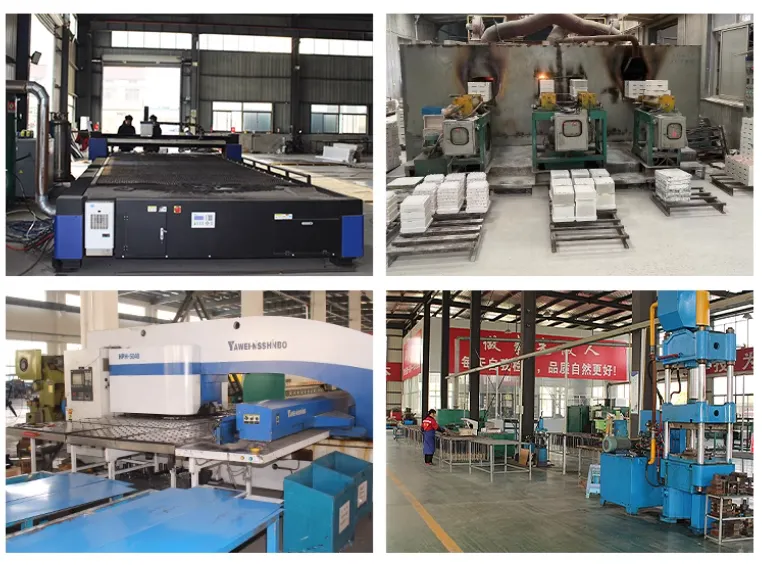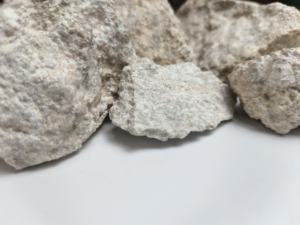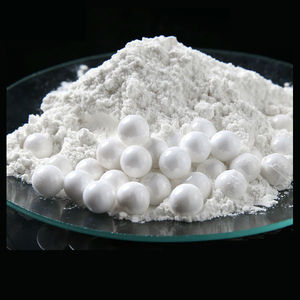Discover Premium Ceramic Products | Durability & Elegance United | Advanced Ceramics
1. Introduction
Just 24 hours ago, Wolfspeed announced a major expansion of its silicon carbide wafer production facility in North Carolina, signaling a surge in demand for high-performance semiconductor materials. At the heart of this manufacturing boom lies a seemingly simple but mission-critical component: the silicon carbide crucible. Unlike everyday ceramic dishes or kitchenware, these crucibles operate in extreme environments where purity, thermal stability, and chemical inertness are non-negotiable.

While terms like ‘silicon carbide ceramic baking dish’ or ‘silicon carbide dinner ceramic plates’ dominate consumer searches, the real industrial power of silicon carbide shines in niche, high-tech applications—especially in semiconductor crystal growth. This article dives into how silicon carbide crucibles enable the production of next-generation electronics that power everything from electric vehicles to 5G infrastructure.
2. Why Silicon Carbide Crucibles Dominate High-Temperature Crystal Growth
Silicon carbide crucibles are engineered to withstand temperatures exceeding 2,000°C while maintaining structural integrity and minimal contamination. This makes them ideal for the physical vapor transport (PVT) method used to grow bulk silicon carbide single crystals—the foundation of SiC wafers.
Compared to alternatives like boron carbide vs silicon carbide, the latter wins hands-down in thermal conductivity, oxidation resistance, and compatibility with molten silicon. Boron carbide, while hard, tends to react with silicon at high temperatures, introducing impurities that ruin semiconductor performance. Silicon nitride crucibles, though excellent in some applications, lack the thermal shock resistance needed for repeated heating and cooling cycles in crystal growth furnaces.

3. Beyond the Crucible: Supporting Components in SiC Wafer Production
The ecosystem around silicon carbide crucibles includes a suite of specialized components—all leveraging the same ultra-durable material. These include:
- silicon carbide ceramic columns that support the crucible assembly inside the furnace
- silicon carbide ring and silicon carbide burner nozzles for precise gas flow control
- silicon carbide brick and rbsic silicon carbide tile block for furnace lining
- silicon carbide thermocouple protection tubes and silicon carbide ceramic tube for furnace to monitor and maintain temperature stability
Even silicon carbide discs and silicon carbide ceramic grinding disc variants are used post-growth to shape and polish raw crystals. Every piece must be made from high-purity silicon carbide to avoid contaminating the ultra-sensitive semiconductor material.

4. The Purity Imperative: Why Kitchenware Terms Don’t Apply Here
You might see search queries like ‘silicon carbide ceramic butter dish’ or ‘silicon carbide white ceramic plates,’ but industrial silicon carbide crucibles have nothing to do with dinnerware. Consumer-grade ‘silicon carbide ceramic dishes’ are often marketing misnomers—true silicon carbide is rarely used in cookware due to cost and brittleness.
In semiconductor manufacturing, even trace impurities from a crucible can ruin an entire wafer batch. That’s why leading producers source crucibles made from ultra-high-purity silicon carbide powder, often custom-fabricated to exact dimensions. This contrasts sharply with decorative items like ‘silicon carbide blue white porcelain plates’ or ‘silicon carbide christmas ceramic platter,’ which are typically conventional ceramics with no functional SiC content.
5. Emerging Trends and Material Competition
As the high purity silicon nitride powder market grows, some manufacturers explore silicon nitride crucible factory options for specific processes. Silicon nitride ceramic components—like silicon nitride ring, silicon nitride plate, or custom silicon nitride heat shield—excel in thermal shock resistance but still fall short in maximum operating temperature compared to silicon carbide.
For now, silicon carbide remains unmatched for bulk crystal growth. Innovations in sintering techniques and composite designs (e.g., silicon carbide zirconia tubes or silicon carbide mullite tube hybrids) aim to extend service life, but the core material stays silicon carbide.
6. Conclusion
The humble silicon carbide crucible may not grace your dinner table, but it’s enabling the electronics revolution powering our future. From electric cars to renewable energy systems, the performance of silicon carbide semiconductors starts with a crucible that can endure hellish conditions without flinching. As companies like Wolfspeed scale production, demand for precision-engineered silicon carbide crucibles—and their supporting components—will only intensify, cementing SiC’s role as the backbone of advanced industrial ceramics.
Our Website founded on October 17, 2012, is a high-tech enterprise committed to the research and development, production, processing, sales and technical services of ceramic relative materials such as Unlock. Our products includes but not limited to Boron Carbide Ceramic Products, Boron Nitride Ceramic Products, Silicon Carbide Ceramic Products, Silicon Nitride Ceramic Products, Zirconium Dioxide Ceramic Products, etc. If you are interested, please feel free to contact us.

